Detroit's commercial fishing heyday
The Detroit News
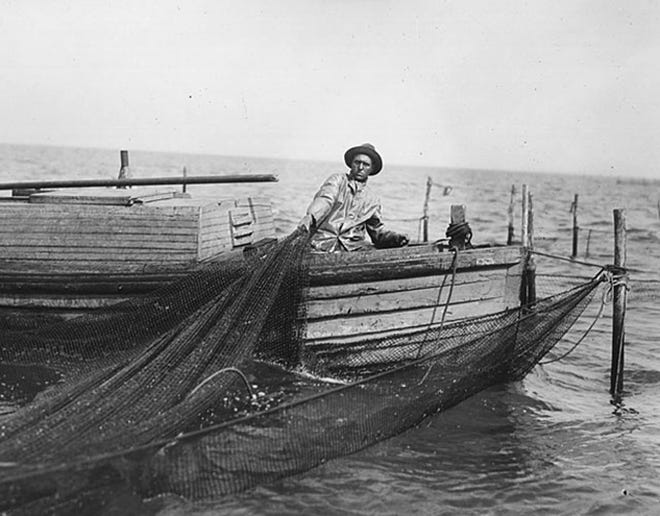
In the middle of the 19th century, Great Lakes fishing outfits favored pound nets, a long net system that involves pounding stakes into the lake bed, attaching the nets and trapping the fish in an enclosure. In this photo taken circa 1930, a fisherman hauls in a pound net.
The Detroit News Archives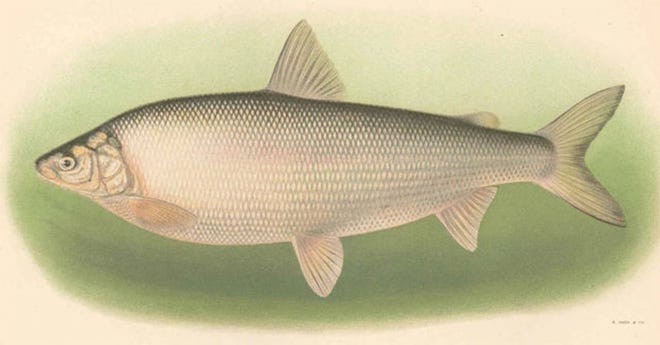
Whitefish, shown in a 1911 illustration, was the most bountiful and popular fish taken from the Detroit River in the 19th century. Decades of overfishing, spawning ground destruction and industrial pollution led to the elimination of whitefish in the river until 2006.
Freshwater And Marine Image Bank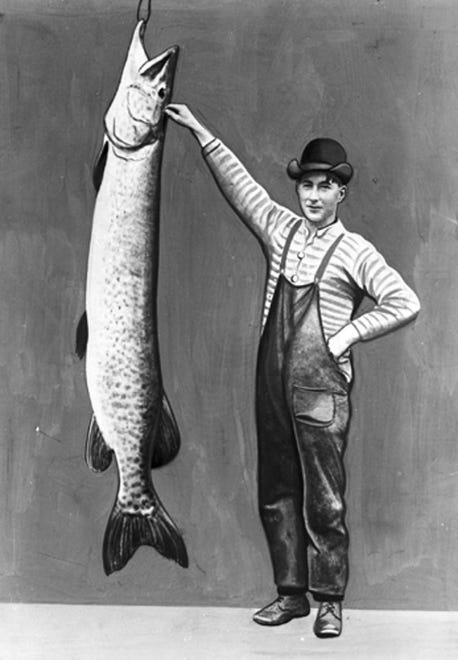
In this photo taken in the 1910s, a fisherman shows off a muskellunge. In 1687 French explorer Lom d'Arce, Baron de La Hontan, wrote that he encountered trout "as big as my thigh" in the Great Lakes.
The Detroit News Archives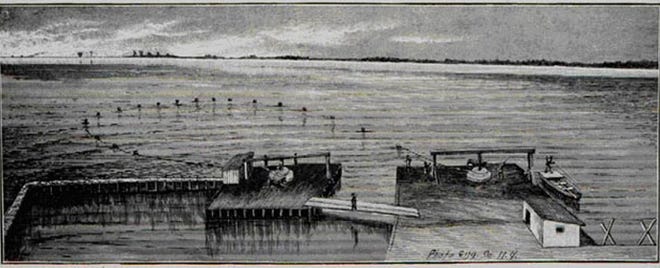
Seine fishing, which employed a large net 30 feet wide and 216 feet long, was the oldest style of commercial fishing on the river. An engraving shows Herbert’s Fishery on the Detroit River, where a herring seine was hauled in and the catch funneled to an enclosure for keeping the fish alive. Two horses on platforms turn the capstans that haul in the ropes attached to the net.
National Oceanic And Atmospheric Administration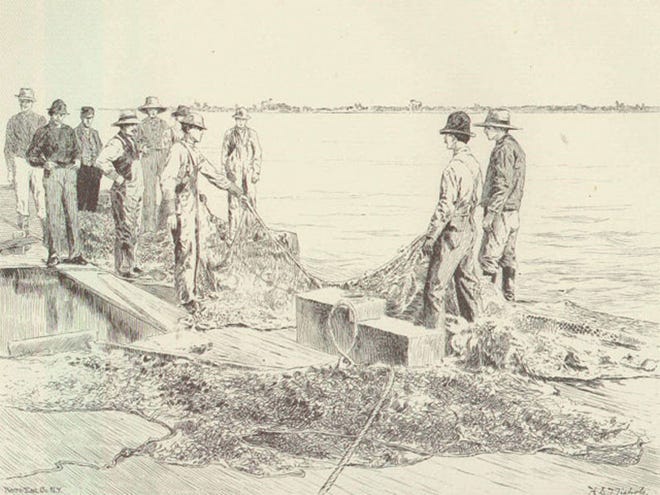
Seine fishermen are depicted on Grassy Island in the Detroit River. Because it involved reeling in the net to shore, seine fishing had the disadvantage of requiring land ownership.
Freshwater And Marine Image Bank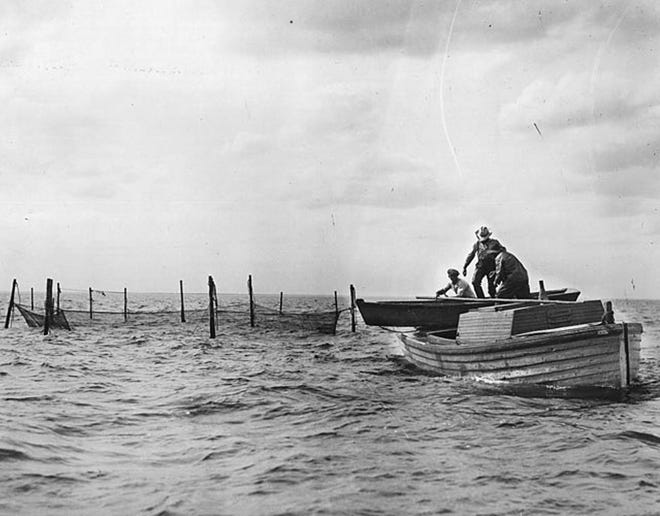
A fishing boat approaches a pound net.
The Detroit News Archives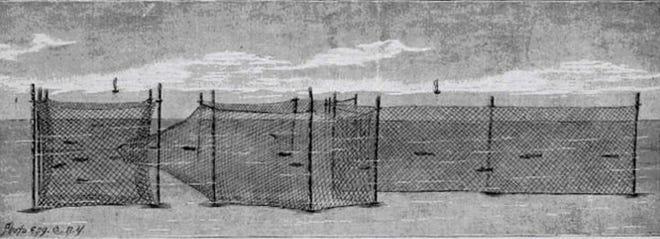
In this illustration of a Detroit River pound net, the fish enter into the "lead" on the right, swim into the "pound" - the circular or heart-shaped netting in the center - and then funnel into the "pot," the square enclosure at left which traps the fish until they are hauled up.
Michigan Fish And Fisheries Commission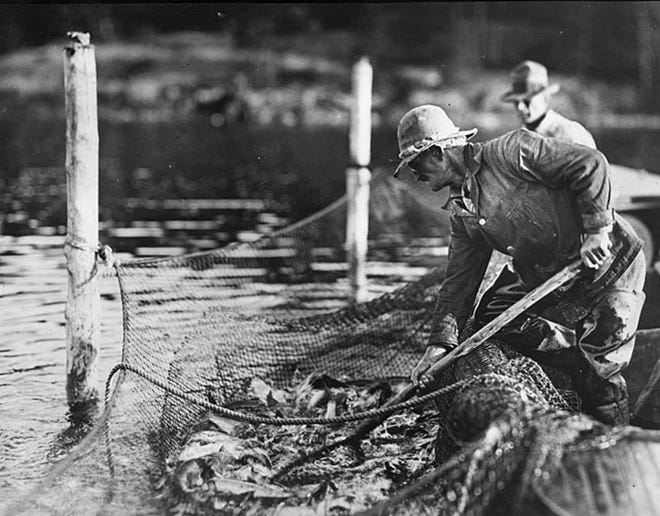
Whitefish are taken out of a pound net.
The Detroit News Archives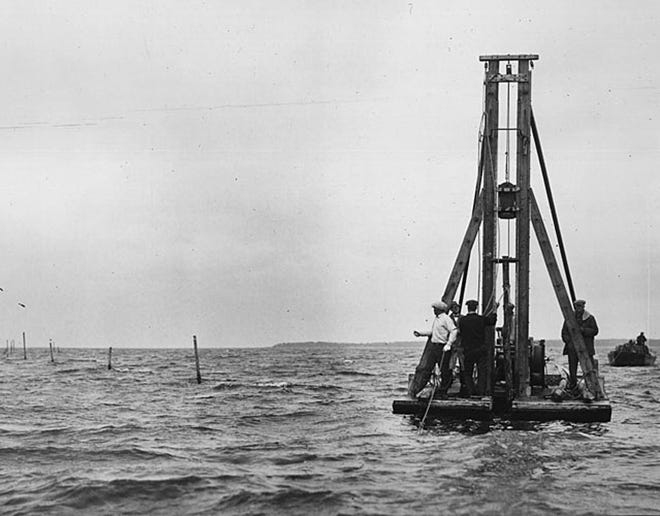
A stake driver sets stakes for the leads of pound nets, circa 1930. At one time, so many pound nets were deployed in Lake Erie that they became a serious menace to ships trying to steam from Detroit east to Sandusky.
The Detroit News Archives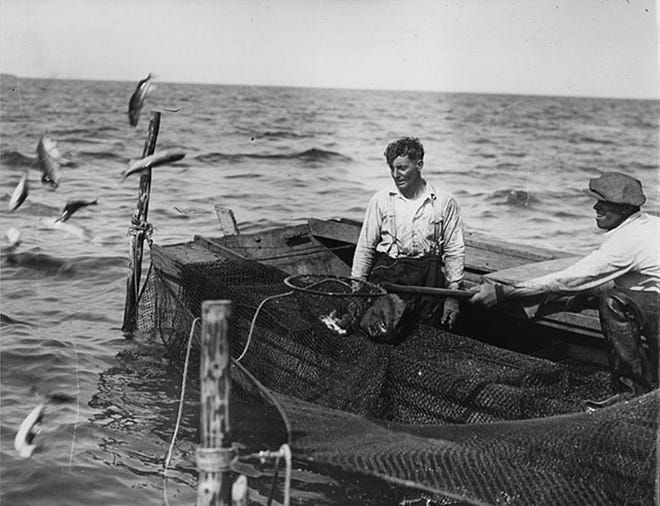
Lake trout and herring jump as the pound net is hauled aboard.
The Detroit News Archives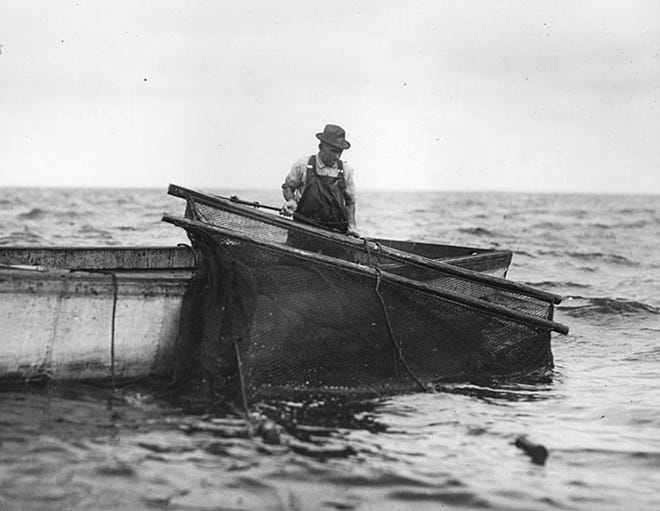
A fisherman lifts the pot of a pound net, sometimes called a trap net.
The Detroit News Archives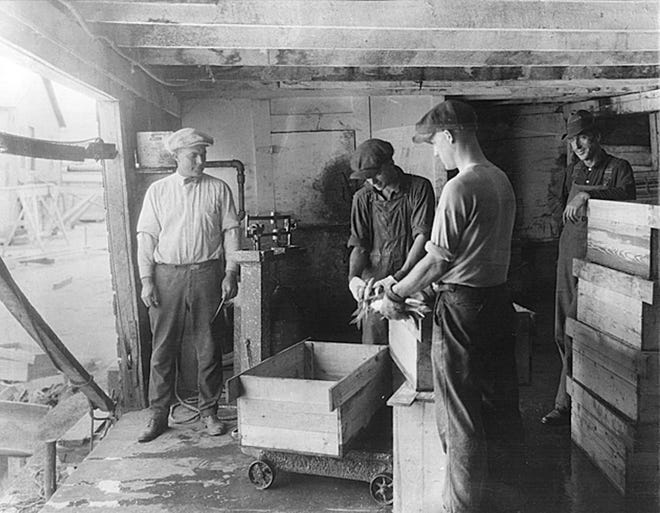
The catch is weighed and put into shipping boxes at the fish house at Bay Port in Michigan's thumb, circa 1930.
The Detroit News Archives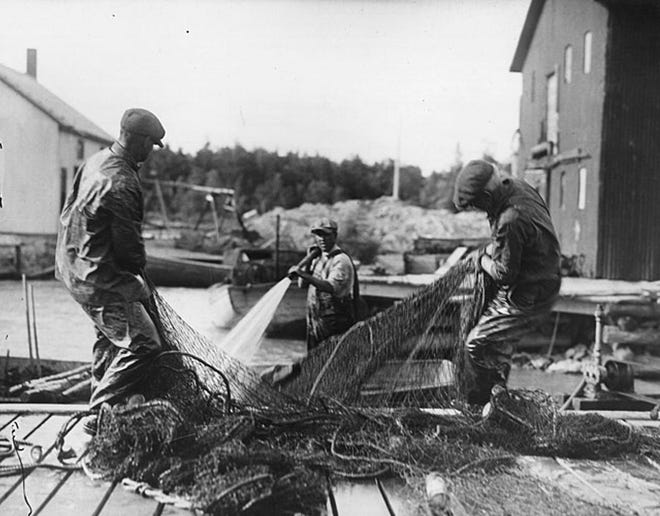
The nets are taken from the fishing boats and placed on the dock, where weeds and other refuse are washed out.
The Detroit News Archives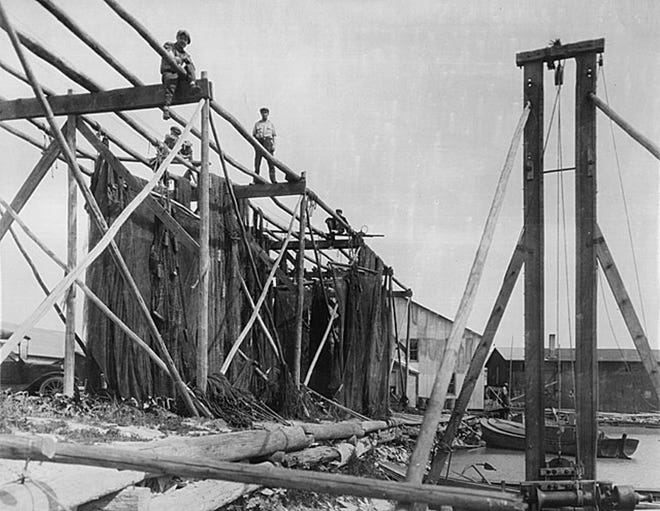
Nets were washed in a tar bath as a preservative, then hung on large racks to dry.
The Detroit News Archives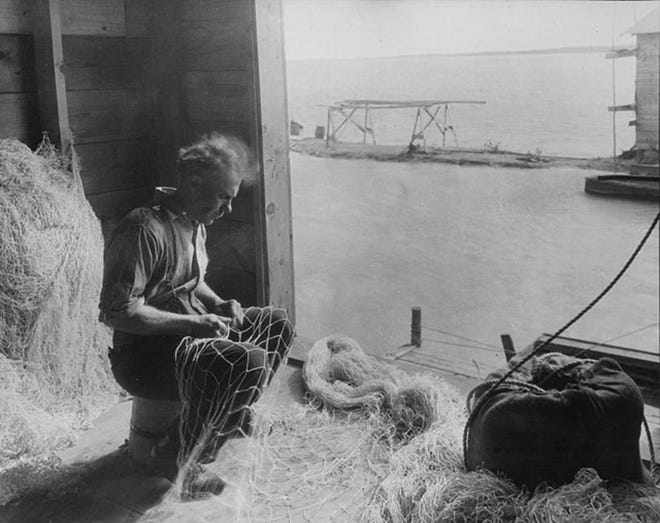
New nets are made out of cotton and linen twine.
The Detroit News Archives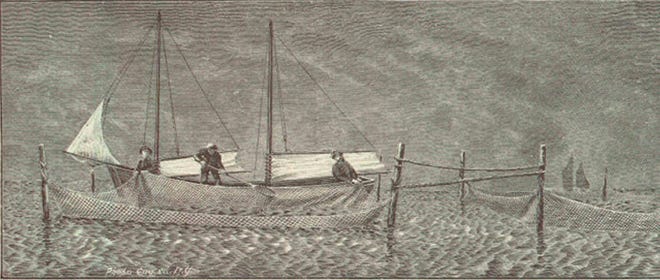
This 1887 illustration was titled "Bailing out the pot" of a pound net in the Detroit River.
Freshwater And Marine Image Bank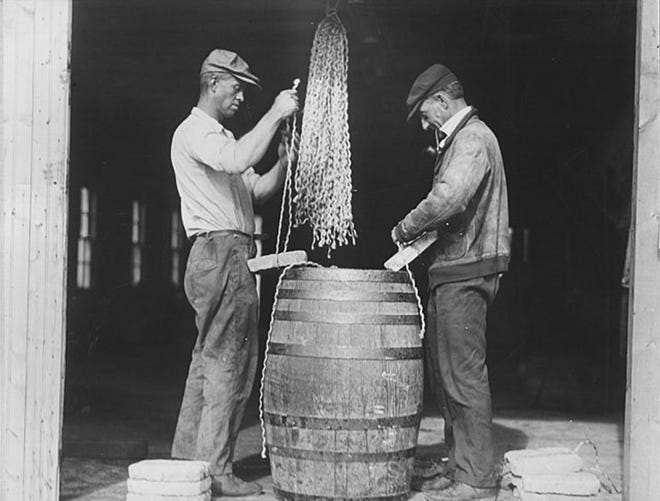
Men prepare concrete anchors to be used for holding the nets. The anchors are fastened to the bottom rope of the nets, while buoys hold up the top of the nets.
The Detroit News Archives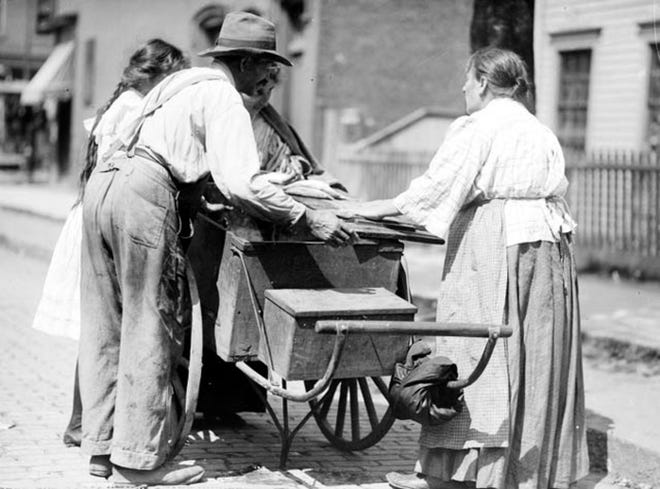
A fish peddler sells his wares on a Detroit street circa 1910.
The Detroit News Archives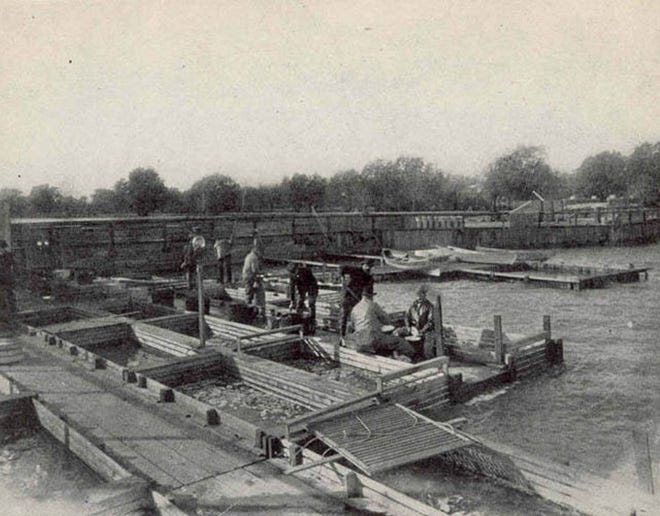
In this 1910 scene, whitefish caught by commercial fishing in the Detroit River are held in crates and pounds until the eggs are ready to be taken. The crates have false bottoms, which can be raised for easier access to the fish.
Freshwater And Marine Image Bank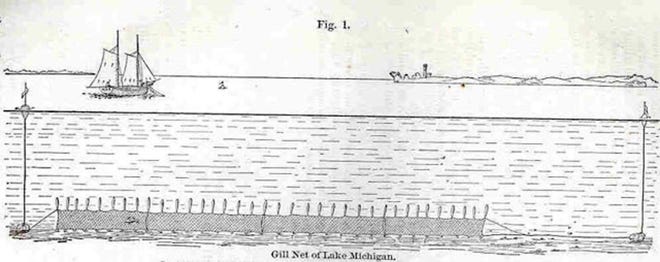
This drawing from circa 1871 shows a gillnet on Lake Michigan, set at the bottom of the water and kept vertical by cedar floats.
Freshwater And Marine Image Bank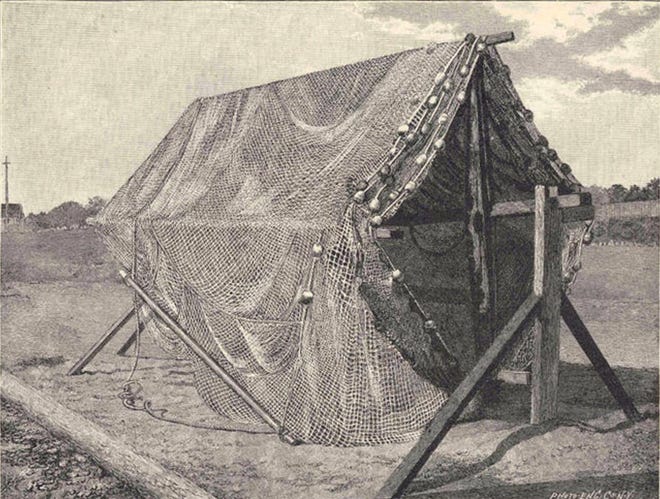
A gillnet used in the Great Lakes dries on a reel in this 1887 illustration.
Freshwater And Marine Image Bank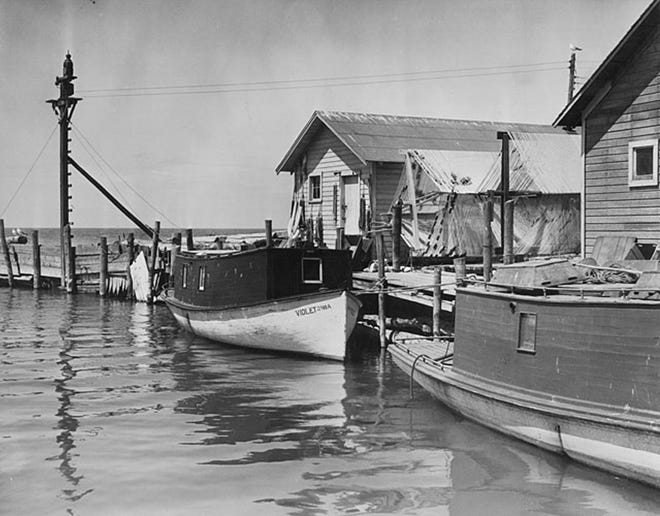
Tug boats dock in Leland, Mich. on Lake Michigan in 1932, while gillnets dry on reels.
Michigan Department Of Conservation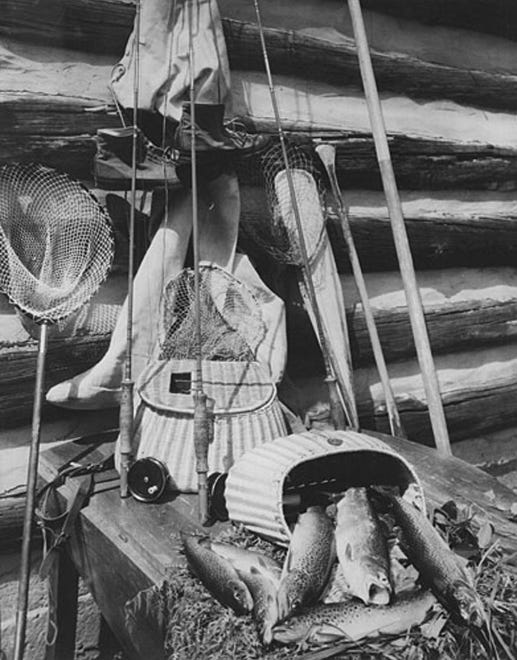
A still life of a trout fisherman's kit.
The Detroit News Archives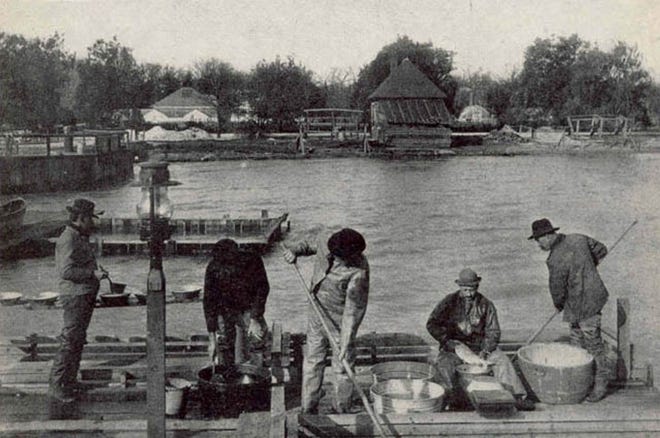
Two men with dip nets lift fish from crates (male whitefish in one crate, females in another) into twin tubs. The eggs are stripped, placed in a pan and passed to the man at the extreme left, who washes them before they are put into the neighboring tubs for removal to the hatchery. This scene was taken on the Detroit River in 1910.
Freshwater And Marine Image Bank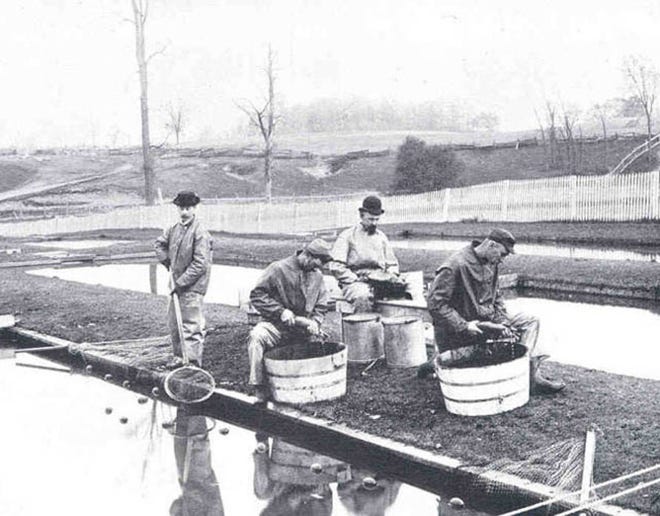
In the late 19th century, as the fish population began to decrease at an alarming rate, Michigan began to establish state hatcheries to replenish the fish. At right, workers strip eggs from female trout at the Northville hatchery ponds, circa 1895.
Freshwater And Marine Image Bank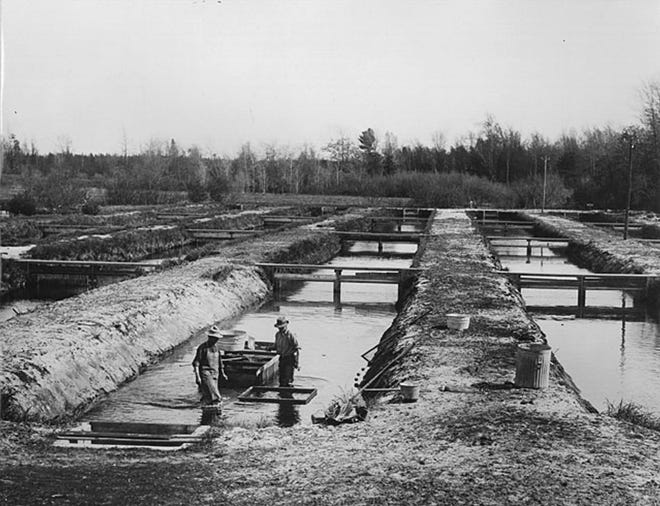
Fingerling trout are culled from the rearing ponds of the Grayling Fish Hatchery for transplanting into wild waters.
The Detroit News Archives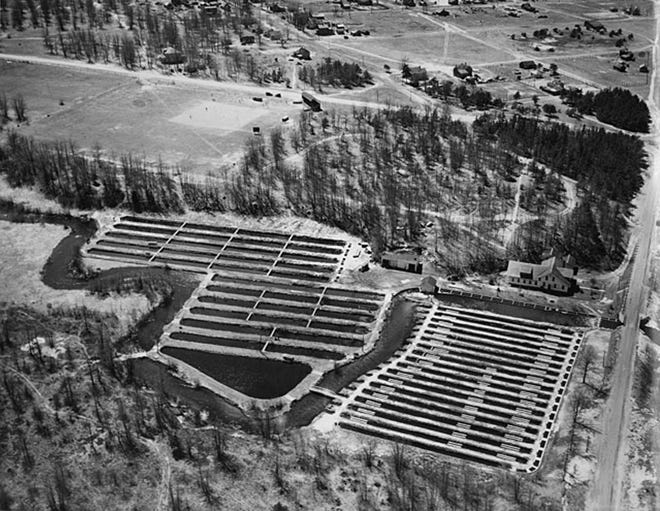
An aerial view of the hatchery buildings and rearing grounds of the Grayling Fish Hatchery, circa 1930.
The Detroit News Archives